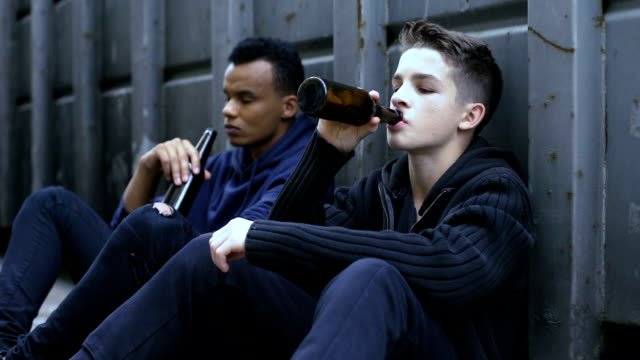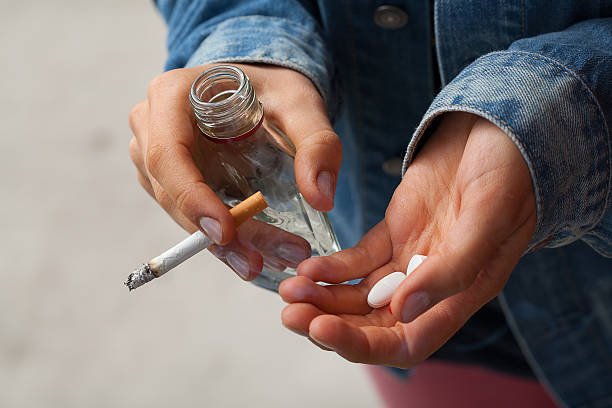Hey there! So, you’re curious about how long it takes to become a psychologist in Canada, right? Well, it’s a journey that requires dedication...
In the educational landscape of South Africa, Life Orientation is a critical subject that addresses various aspects of personal development, social dynamics, and health awareness among students. One of the key topics within this curriculum is understanding and dealing with risky behavior. This article delves into what constitutes risky behavior and its implications, particularly within the context of South African youth.
Risky Behaviour Definition for Life Orientation Subject
Risky behavior can be defined as actions or activities that can potentially lead to harm or adverse outcomes for an individual or others. These behaviors often involve a degree of danger and can result in negative consequences, both in the short and long term. In the framework of Life Orientation, risky behavior is not just limited to physical risks but also encompasses emotional, social, and psychological dimensions.
Types of Risky Behaviors
Understanding the specific types of risky behaviors that South African youth engage in is crucial for developing effective prevention strategies. Here are the most relevant and prevalent risky behaviors among South African youth:
1. Substance Abuse
Alcohol Consumption:
- Practical Example: Underage drinking at house parties and social gatherings.
- Impact: Leads to accidents, poor academic performance, and potential addiction.
Drug Use:
- Practical Example: Experimentation with marijuana, Mandrax, or even more dangerous substances like nyaope (a mixture of heroin and other drugs).
- Impact: Health deterioration, involvement in crime to support addiction, and strained family relationships.
2. Unprotected Sexual Activity
Early Sexual Debut:
- Practical Example: Engaging in sexual activities at a young age without proper knowledge of contraception and safe sex practices.
- Impact: Increased risk of HIV/AIDS, other sexually transmitted infections (STIs), and teenage pregnancies.
Multiple Sexual Partners:
- Practical Example: Having several sexual partners concurrently or sequentially without using protection.
- Impact: Higher likelihood of contracting and spreading STIs and unplanned pregnancies.
3. Violent Behavior
Gang Involvement:
- Practical Example: Joining local gangs for protection, status, or economic gain.
- Impact: Exposure to violent activities, criminal records, and life-threatening situations.
School Fights:
- Practical Example: Engaging in physical altercations on school premises.
- Impact: Injuries, suspensions, or expulsions, and a hostile school environment.
4. Reckless Driving
Drunk Driving:
- Practical Example: Driving under the influence of alcohol after parties or social events.
- Impact: Car accidents, legal consequences, and potential fatalities.
Joyriding:
- Practical Example: Taking cars without permission and driving recklessly for thrill-seeking.
- Impact: Damage to property, legal issues, and risk of severe injuries or death.
5. Self-Harm
Cutting or Burning:
- Practical Example: Using sharp objects to cut or burn oneself as a coping mechanism for emotional pain.
- Impact: Permanent scars, infections, and potential escalation to more severe self-harm or suicide.
6. Cyber Risks
Cyberbullying:
- Practical Example: Using social media platforms to harass or bully peers.
- Impact: Psychological trauma, depression, and in extreme cases, suicide.
Online Predation:
- Practical Example: Engaging with strangers online who may exploit or abuse them.
- Impact: Risk of kidnapping, sexual abuse, and exploitation.
7. Truancy
Skipping School:
- Practical Example: Regularly missing school to hang out with friends or engage in other activities.
- Impact: Falling behind academically, increased dropout rates, and limited future opportunities.
8. Criminal Activities
Theft and Vandalism:
- Practical Example: Stealing from shops or vandalizing public property as acts of rebellion or for financial gain.
- Impact: Criminal records, incarceration, and limited job prospects.
9. Involvement in Illegal Economic Activities
Selling Drugs:
- Practical Example: Youth getting involved in the sale of drugs to make money, often under the influence of local gangs.
- Impact: Legal repercussions, perpetuation of the drug cycle, and personal safety risks.
Illegal Mining (Zama Zama):
- Practical Example: Young people participating in illegal mining operations for quick financial gain.
- Impact: Severe health risks, danger from mine collapses, and conflict with law enforcement.
10. Risky Health Behaviors
Poor Dietary Choices:
- Practical Example: Consuming fast food and sugary drinks excessively, leading to obesity and related health issues.
- Impact: Long-term health problems like diabetes, heart disease, and decreased physical fitness.
Lack of Exercise:
- Practical Example: Spending excessive time on sedentary activities like video games and social media.
- Impact: Increased risk of obesity, mental health issues, and reduced overall well-being.
11. Risky Financial Behavior
Gambling:
- Practical Example: Engaging in online betting, casino games, or informal gambling.
- Impact: Financial loss, addiction, and potential criminal activities to recover lost money.
Unwise Spending:
- Practical Example: Spending money on non-essential items instead of saving or investing.
- Impact: Financial instability and inability to meet future financial needs.
12. Academic Misconduct
Cheating:
- Practical Example: Copying during exams or submitting plagiarized assignments.
- Impact: Academic penalties, loss of credibility, and compromised education quality.
Skipping Assignments:
- Practical Example: Failing to complete or submit homework and projects.
- Impact: Poor academic performance and missed learning opportunities.
13. Emotional and Psychological Risks
Emotional Isolation:
- Practical Example: Withdrawing from family and friends due to personal issues or depression.
- Impact: Increased feelings of loneliness, exacerbation of mental health problems, and potential for self-harm.
Aggression and Anger Issues:
- Practical Example: Reacting violently to minor conflicts or frustrations.
- Impact: Damaged relationships, trouble with the law, and potential for escalating violence.
14. Exposure to Unsafe Environments
Unsafe Home Environments:
- Practical Example: Living in homes with domestic violence or substance abuse.
- Impact: Trauma, emotional distress, and potential replication of risky behaviors.
Street Living:
- Practical Example: Homeless youth living on the streets, often exposed to drugs and crime.
- Impact: Increased risk of exploitation, substance abuse, and health problems.
15. Sexual Exploitation and Human Trafficking
Sex Work:
- Practical Example: Engaging in sex work due to economic hardship or coercion.
- Impact: Physical and emotional trauma, increased risk of STIs, and exploitation.
Human Trafficking:
- Practical Example: Youth being lured with promises of jobs or education and then trafficked.
- Impact: Loss of freedom, severe abuse, and long-term psychological damage.
Consequences of Risky Behaviors
The implications of engaging in risky behaviors are far-reaching. They can affect an individual’s physical and mental health, academic performance, relationships, and future opportunities. In severe cases, these behaviors can result in chronic health issues, legal troubles, or even fatality.




Life Orientation: A Tool for Awareness and Prevention
Life Orientation as a subject plays a crucial role in educating students about the dangers of risky behaviors. It offers a platform to discuss these issues openly, understand the underlying causes, and learn strategies to make safer and more informed choices. The curriculum aims to equip students with the knowledge and skills to:
- Recognize risky behaviors and their potential consequences.
- Develop critical thinking and decision-making skills.
- Understand the impact of peer influence and how to resist negative peer pressure.
- Learn about safe practices and healthy lifestyle choices.
Understanding risky behavior is crucial for the holistic development of young individuals. Life Orientation serves as a vital educational tool, guiding students through the complexities of various risky behaviors and their repercussions. By providing comprehensive education on these topics, Life Orientation helps foster a generation that is not only aware of the risks they face but also equipped to make choices that safeguard their well-being and future.
Questions and Answers About Risky Behaviour from Past Life Orientation School Projects
Why the Youth Often Involve Themselves in Risky Behaviours in South Africa
Understanding why young people engage in risky behaviors is crucial for addressing and preventing these actions. In South Africa, several specific factors contribute to this trend, often leading to dangerous consequences.
Four Reasons Why the Youth Often Involve Themselves in Risky Behaviours
- Peer Pressure:
- Young people often feel the need to fit in with their friends. This pressure can lead them to do things they wouldn’t normally do, like smoking or drinking. The South African National Youth Risk Behaviour Survey found that over 60% of teenagers tried smoking or drinking because their friends did.
- Lack of Supervision:
- Many South African parents work long hours, leaving their children without much supervision. Research from the Human Sciences Research Council showed that teenagers who are left alone more often tend to try drugs or alcohol.
- Socioeconomic Factors:
- High unemployment and poverty are big issues in South Africa. Stats SA reported that youth unemployment was at 63.3% in early 2023. Without jobs or money, some young people turn to crime or join gangs to survive.
- Mental Health Issues:
- Depression and anxiety are common among South African youth. The South African Depression and Anxiety Group noted that many teens use drugs or alcohol to cope with their feelings.
Factors Causing Risk Behaviour Amongst Youth in South Africa
- Substance Abuse: Easy access to drugs and alcohol, especially in cities.
- Family Problems: Issues like domestic violence or neglect can push youth towards risky behaviors.
- School Challenges: Poor performance in school and high dropout rates are linked to risky activities.
- Community Environment: Living in high-crime areas makes risky behavior seem normal.
- Media Influence: TV and social media often show risky behaviors in a positive light.
- Cultural Norms: Some societal norms can unintentionally encourage risky behaviors, like early sexual activity.
Eight Ways to Prevent Risk Behaviour
- Parental Involvement: Parents should be actively involved in their children’s lives and talk openly with them.
- Education and Awareness: Teaching kids about the dangers of risky behaviors helps them make better choices.
- Extracurricular Activities: Sports, arts, and other activities give kids positive ways to spend their time.
- Mental Health Support: Access to counseling can help address the issues leading to risky behavior.
- Positive Peer Influence: Encouraging friendships with kids who engage in healthy activities.
- Community Programs: Local programs focused on youth development and empowerment.
- Economic Opportunities: Job training and employment can reduce the need to engage in risky behaviors.
- Safe Environments: Creating safe, supervised places for youth to gather.
High-Risk Behaviors in Adolescence
Adolescents often take risks as they explore their independence. In South Africa, high-risk behaviors include:
- Substance Abuse: Trying drugs and alcohol.
- Unprotected Sexual Activity: Having sex without protection.
- Violence: Getting into fights or joining gangs.
- Reckless Driving: Speeding or drunk driving.
- Self-Harm: Cutting or burning themselves.
- Crime: Stealing or vandalizing property.
Strong Motivational Factors for the Youth to be Involved in Risky Sexual Behavior
Risky sexual behavior is influenced by several factors:
- Peer Influence: Wanting to fit in with friends who are sexually active.
- Media Exposure: Seeing sexual content in media that makes it seem normal.
- Lack of Education: Not knowing enough about sexual health and contraception.
- Curiosity: Wanting to explore sex out of curiosity.
- Low Self-Esteem: Seeking validation and affection through sex.
- Substance Use: Alcohol and drugs impair judgment, leading to risky sexual decisions.
Six Risky Situations to Which Our Youth is Frequently Exposed
- Parties with Alcohol and Drugs: Common places for substance abuse.
- Unsanctioned Gatherings: Events without adult supervision.
- Internet and Social Media: Risk of online predators and cyberbullying.
- High-Crime Areas: Spending time in dangerous neighborhoods.
- Truancy: Skipping school and hanging out in unsafe places.
- Unsupervised Homes: Being alone at home for long periods.
Three Influences of Self-Esteem on Teenagers Participating in Risky Behavior
Self-esteem impacts teenagers’ behaviors in several ways:
- Low Self-Esteem: Teens with low self-esteem may engage in risky behaviors to feel accepted or to numb their pain.
- Overconfidence: Some teens with high self-esteem might take risks because they feel invincible.
- Peer Validation: Seeking approval from friends can lead to risky actions.
How Being Involved in Risky Sexual Behaviour Could Negatively Impact Your School Work
- Health Issues: Unprotected sex can lead to sexually transmitted infections (STIs) and unplanned pregnancies, causing health problems and missed school days.
- Emotional Stress: Risky sexual behavior can lead to emotional distress and mental health issues, affecting focus and performance in school.
- Reputation Damage: Negative perceptions from peers and teachers can impact a student’s self-esteem and participation in school activities.
Ways in Which the Youth Could Seek Support from Their Parents When They Find Themselves in a Risky Situation
- Open Communication: Encourage honest and non-judgmental conversations about challenges.
- Seeking Guidance: Ask parents for advice and support in making safe choices.
- Accessing Resources: Request help in finding professional counseling or support groups.
- Establishing Trust: Build a relationship of trust to feel comfortable sharing difficult situations.
- Setting Boundaries: Work with parents to set healthy boundaries and guidelines.
- Emergency Plans: Have a plan in place for contacting parents immediately in dangerous situations.
Investigating the Influence of Self-Esteem and Teenagers Participating in Risky Behaviour
Self-esteem plays a crucial role in teenagers’ behaviors. Low self-esteem can lead to risky behaviors as a way to seek validation or escape emotional pain. Conversely, high self-esteem can help teens resist peer pressure and make safer choices. Understanding these dynamics can help parents, educators, and communities support youth in making healthier decisions.




